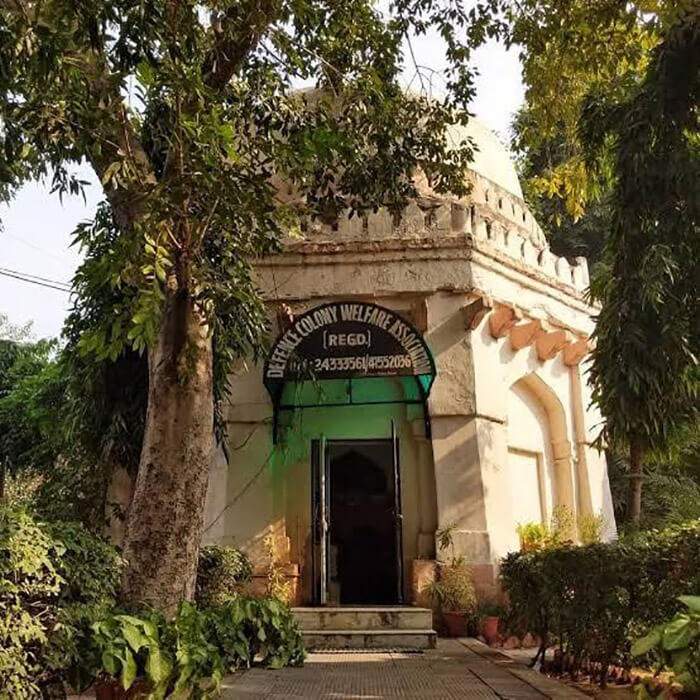
In a landmark decision, the Supreme Court of India has directed the Defence Colony Welfare Association (DCWA) to propose the amount of compensation it should pay for the unauthorized occupation of the 500-year-old Lodhi-era monument, Shaikh Ali 'Gumti,' over the past six decades. This ruling underscores the judiciary's commitment to preserving India's rich cultural heritage and holding accountable those who encroach upon protected historical sites.
Background of the Case
The Shaikh Ali 'Gumti' tomb, an octagonal stone structure with a distinctive dome, is nestled within a public park in Delhi's affluent Defence Colony. Despite its historical significance, the monument had been neglected for years. The DCWA took possession of the tomb, converting it into their office space. They made several unauthorized modifications, including installing electricity, air-conditioning, plumbing, and even constructing a modern lavatory block. These alterations not only compromised the monument's structural integrity but also disrespected its historical and cultural value.
Legal Framework
The primary legislation governing the protection of ancient monuments in India is the Ancient Monuments and Archaeological Sites and Remains Act of 1958 (AMASR Act). This Act mandates the preservation of monuments of national importance and regulates activities around them. Specifically, Section 20A of the Act prohibits any construction or public work within a 100-meter 'prohibited area' surrounding a protected monument. The DCWA's actions clearly violated these provisions, as they undertook unauthorized construction within the prohibited zone.
Additionally, the Antiquities and Art Treasures Act of 1972 aims to prevent the smuggling and illegal dealing of antiquities and art treasures. While this Act primarily addresses the export and trade of antiquities, it also emphasizes the importance of preserving cultural heritage sites from unauthorized alterations and occupations.
Judicial Proceedings
The Supreme Court's intervention came after reports highlighted the DCWA's unauthorized occupation and modification of the Shaikh Ali 'Gumti' tomb. A bench comprising Justices Sudhanshu Dhulia and Ahsanuddin Amanullah expressed their dismay at the blatant disregard for heritage conservation laws. The court questioned the DCWA's justification for occupying the monument and criticized the Archaeological Survey of India (ASI) for its inaction in preventing such encroachments.
In its directive, the Supreme Court ordered the DCWA to suggest the quantum of compensation for their illegal occupation. The court emphasized that such compensation should reflect the duration of the unauthorized use and the extent of alterations made to the historic structure. Furthermore, the Municipal Corporation of Delhi (MCD) was instructed to take immediate steps to remove any unauthorized constructions and restore the monument to its original state.
Precedents of Illegal Occupation
This case is not an isolated incident. India has witnessed several instances where protected monuments have been encroached upon or misused:
D'Eremao Cemetery Case: In 2005, the Archaeological Survey of India issued a show-cause notice for the removal of illegal occupation and unauthorized construction at the D'Eremao Cemetery. The occupants claimed ownership through adverse possession, but the Delhi High Court dismissed their petitions, reinforcing the sanctity of protected monuments.
Humayun's Tomb Encroachments: During the late 1990s, unauthorized occupations around the Humayun's Tomb in Delhi were removed under the directive of then-Minister Jagmohan. This action was pivotal in restoring the monument's surroundings and preserving its historical essence.
Implications of the Ruling
The Supreme Court's decision in the Shaikh Ali 'Gumti' case serves as a stern warning to individuals and organizations that encroach upon or misuse protected heritage sites. It reinforces the importance of adhering to heritage conservation laws and the responsibilities of civic bodies like the ASI and MCD in safeguarding these monuments. The ruling also highlights the judiciary's proactive role in heritage preservation, ensuring that cultural treasures are protected for future generations.
Conclusion
In conclusion, the unauthorized occupation of the Shaikh Ali 'Gumti' tomb by the Defence Colony Welfare Association exemplifies the challenges faced in preserving India's rich cultural heritage. The Supreme Court's decisive action in this matter underscores the necessity of strict enforcement of heritage conservation laws and serves as a precedent for addressing similar encroachments in the future.
By Manmeet Kaur
4th year, B.A. LL.B
Ideal Institute Of Management And Technology (Affiliated to GGSIP University, New Delhi)
N-55, Sri Niwas Puri, New Delhi 110065
ireneslegal9@gmail.com
+91 995 378 5058
Copyright © ireneslegal.com. All Rights Reserved.
Designed by Questend India Pvt Ltd